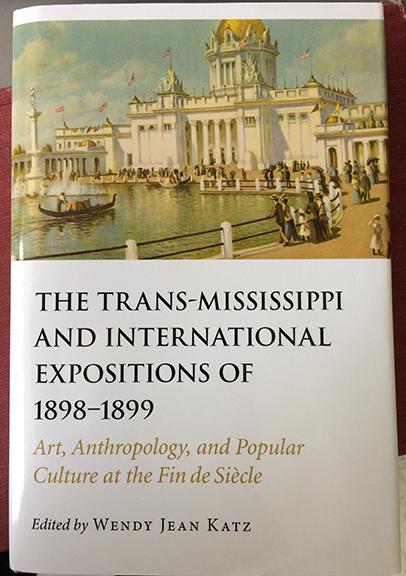Katz to give gallery talk on women at Omaha’s 1898 Trans-Mississippi & International Exposition in Omaha
calendar icon28 Feb 2018

Lincoln, Neb.--Associate Professor of Art History Wendy J. Katz is among four speakers who will discuss the ways that women participated in and were represented at Omaha’s World Fair in 1898.
“Ladies at the Fair: Women and the Trans-Mississippi & International Exposition” will take place on Friday, March 2 from 4-6 p.m. at the W. Dale Clark (Main) Library at 215 S. 15th St. in Omaha. The event is free and open to the public. Katz will be joined by University of Nebraska–Lincoln Associate Professor of English Timothy Schaffert, as well as Emily Godbey and Jillian Roger in the discussion.
The talks are part of the opening of an exhibition at the library that will feature unique artifacts from Omaha Public Library’s Trans-Mississippi & International Exposition archive. The exhibition opens March 2 and runs through the month of March and is curated by University of Nebraska-Lincoln alumna Victoria Hoyt (M.F.A. 2012). Hoyt is the curator for the Michael Phipps Gallery located inside the W. Dale Clark Library.
“The idea for the exhibit began with Wendy’s book, and the fact that Omaha Public Library has such a rich Trans-Mississippi and International Exposition collection,” Hoyt said. “With it being over Women’s History Month and the 120th anniversary of the fair, we thought focusing on women’s roles would help shed some different light on the topic.”
Hoyt was inspired by current social media trends when it came time to decide how to display the exhibition.
“Reading the book, I kept thinking of frames and displays and posturing, and that led to me thinking about how we do that now with social media, especially with Instagram,” Hoyt said. “We decided to show off the official photographs by Frank A. Rinehart, but use a ‘retrogram’ format that contextualizes the images using both historical and contemporary voices. We will also be showing a variety of artifacts that women took away from the fair either as employee, organizer or visitor, to mark their time and place at such an important event.”
Katz is the editor of “The Trans-Mississippi and International Expositions of 1898-1899: Art, Anthropology and Popular Culture at the Fin De Siècle,” which was published in February by the University of Nebraska Press (https://go.unl.edu/v803).
“I started researching the book after helping to develop the UNL website on the Exposition (https://go.unl.edu/jbo7),” Katz said. “Timothy Schaffert was the lead scholar, in partnership with the Omaha Public Library, but as director of the Plains Humanities Alliance, I helped with the funding and fundraising for it. Gradually, the spell of the Exposition drew me in.”
Katz said she will discuss women’s roles in 1898, which were varied.
“Women were art critics, newspaper editors, publicity managers, designers, exhibitors, concessionaires, waitresses, typists, salesladies and artists,” Katz said. “I’ll also talk about how the images (in photos, on coins, souvenirs, pamphlets, etc.) of women communicated ideas about how civilized and progressive Omaha was.”
The Trans-Mississippi Exposition of 1898, spread across 184 acres at the northern edge of Omaha near the Missouri River from June 1-Oct. 31, 1898, and celebrated Omaha’s key economic role as a center of industry west of the Mississippi River and its arrival as a progressive metropolis after the Panic of 1893.
The exposition also promoted the rise of the United States as an imperial power, opening during the Spanish-American War.
Inspired by Chicago’s World’s Fair in 1893, the Trans-Mississippi & International Exposition attracted two million visitors.
The interdisciplinary essays in Katz’s book by leading scholars cover an array of topics, from competing commercial visions of the cities of the Great West; to the role of women in the promotion of City Beautiful ideals of public art and urban planning; and the constructions of Indigenous and national identities through exhibition, display and popular culture.
For more information on the book, visit Katz’s blog on the publisher’s website at https://go.unl.edu/2fec.